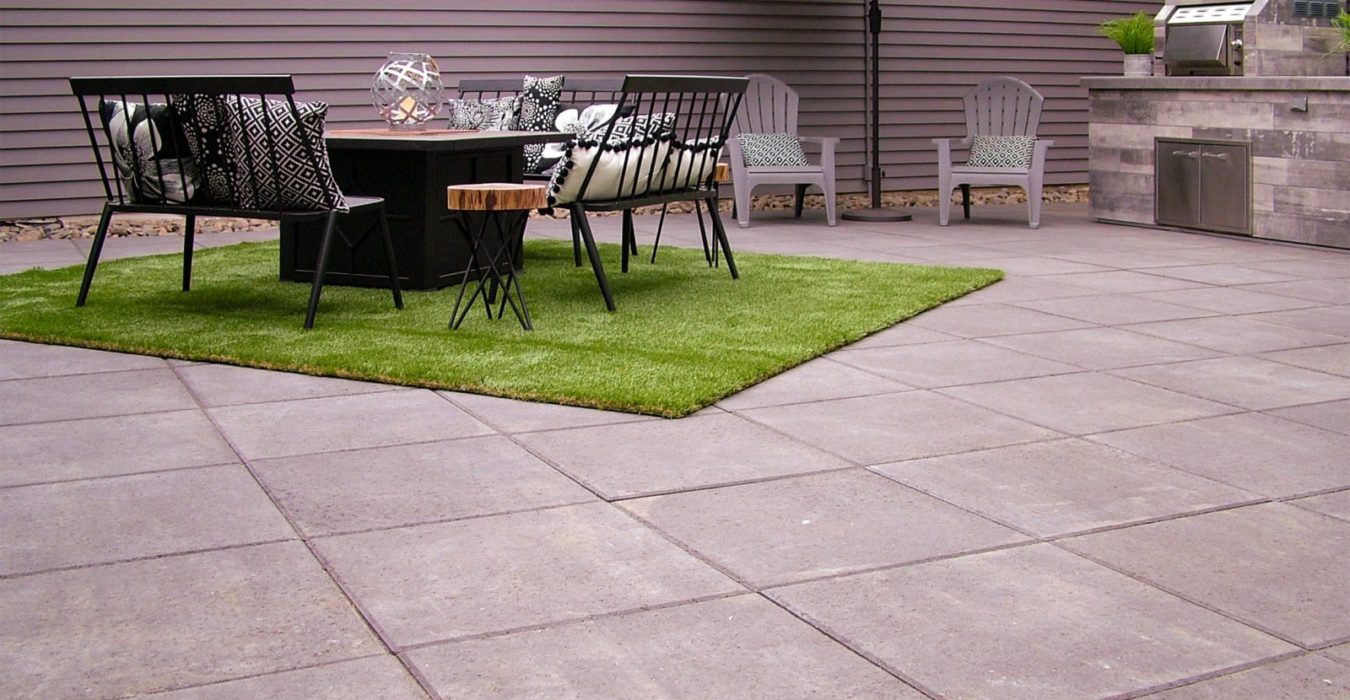
Large Pavers for Patio: A Comprehensive Guide to Enhance Your Outdoor Living Space
In the realm of outdoor design, patios hold a special place as the heart of any backyard. They provide a versatile space for relaxation, entertainment, and al fresco dining. When it comes to choosing the perfect patio material, large pavers have emerged as a top contender, offering a myriad of benefits that elevate the aesthetics and functionality of your outdoor sanctuary.
What are Large Pavers?
Large pavers, also known as jumbo pavers, are oversized concrete or natural stone slabs that typically range in size from 24 inches to 48 inches or more. Their expansive dimensions create a seamless, sophisticated look that mimics the grandeur of natural flagstone or cobblestone.
Benefits of Large Pavers for Patios
-
Aesthetic Appeal: Large pavers exude an undeniable elegance and sophistication that instantly enhances the overall ambiance of your patio. Their clean lines and minimal grout joints create a visually cohesive and expansive surface that complements any architectural style.
-
Durability and Longevity: Concrete and natural stone pavers are renowned for their exceptional durability and resistance to wear and tear. They can withstand heavy foot traffic, harsh weather conditions, and even occasional vehicle weight, ensuring a long-lasting and low-maintenance patio surface.
-
Versatility: Large pavers offer unmatched versatility, allowing you to create a wide range of patio designs. They can be laid in various patterns, including running bond, herringbone, or circular, to suit your personal preferences and the architectural features of your home.
-
Easy Installation: While the size of large pavers may seem intimidating, their installation process is surprisingly straightforward. With proper preparation and a level base, these pavers can be laid efficiently, reducing labor costs and project completion time.
-
Reduced Maintenance: Unlike smaller pavers, large pavers require minimal maintenance. Their wide joints allow for easy cleaning and prevent the accumulation of dirt and debris, ensuring a pristine appearance for years to come.
Types of Large Pavers
-
Concrete Pavers: Concrete pavers are an affordable and durable option for large patios. They come in a wide variety of colors, textures, and finishes, allowing you to customize the look of your patio to match your home’s exterior.
-
Natural Stone Pavers: Natural stone pavers, such as granite, limestone, and bluestone, offer a timeless and sophisticated aesthetic. They are available in a range of colors and textures, reflecting the beauty and variation found in nature.
Choosing the Right Large Pavers for Your Patio
When selecting large pavers for your patio, consider the following factors:
-
Size: Determine the size of pavers that best suits the scale of your patio and the desired aesthetic. Larger pavers create a more spacious and modern look, while smaller pavers offer a more traditional and intricate appearance.
-
Material: Choose a material that complements the architectural style of your home and the overall design of your outdoor space. Concrete pavers are a versatile and cost-effective option, while natural stone pavers provide a touch of luxury and elegance.
-
Color and Texture: The color and texture of your pavers should harmonize with the surrounding landscape and the exterior of your home. Consider the overall color scheme and the architectural features to create a cohesive and visually appealing design.
-
Budget: Large pavers can vary in price depending on the material, size, and complexity of the installation. Determine your budget and explore different options to find the best value for your investment.
Installation Considerations
-
Base Preparation: Proper base preparation is crucial for the longevity and stability of your patio. The base should be level, compacted, and free of any organic matter or debris.
-
Laying the Pavers: Large pavers should be laid in a staggered pattern to ensure stability and prevent shifting. Use a rubber mallet to gently tap the pavers into place, ensuring they are level and even.
-
Jointing: The joints between pavers can be filled with polymeric sand or a mortar mix. Polymeric sand provides a flexible and weed-resistant joint, while mortar offers a more permanent and durable solution.
-
Sealing: Once the pavers are installed, it is recommended to seal them to protect them from stains, fading, and the elements. Sealers should be applied according to the manufacturer’s instructions.
Conclusion
Large pavers for patios offer an unparalleled combination of aesthetics, durability, and versatility. By carefully considering the factors discussed in this guide, you can choose the perfect large pavers to transform your outdoor space into a stunning and inviting oasis. With proper installation and maintenance, your large paver patio will provide years of enjoyment and enhance the overall value of your property.